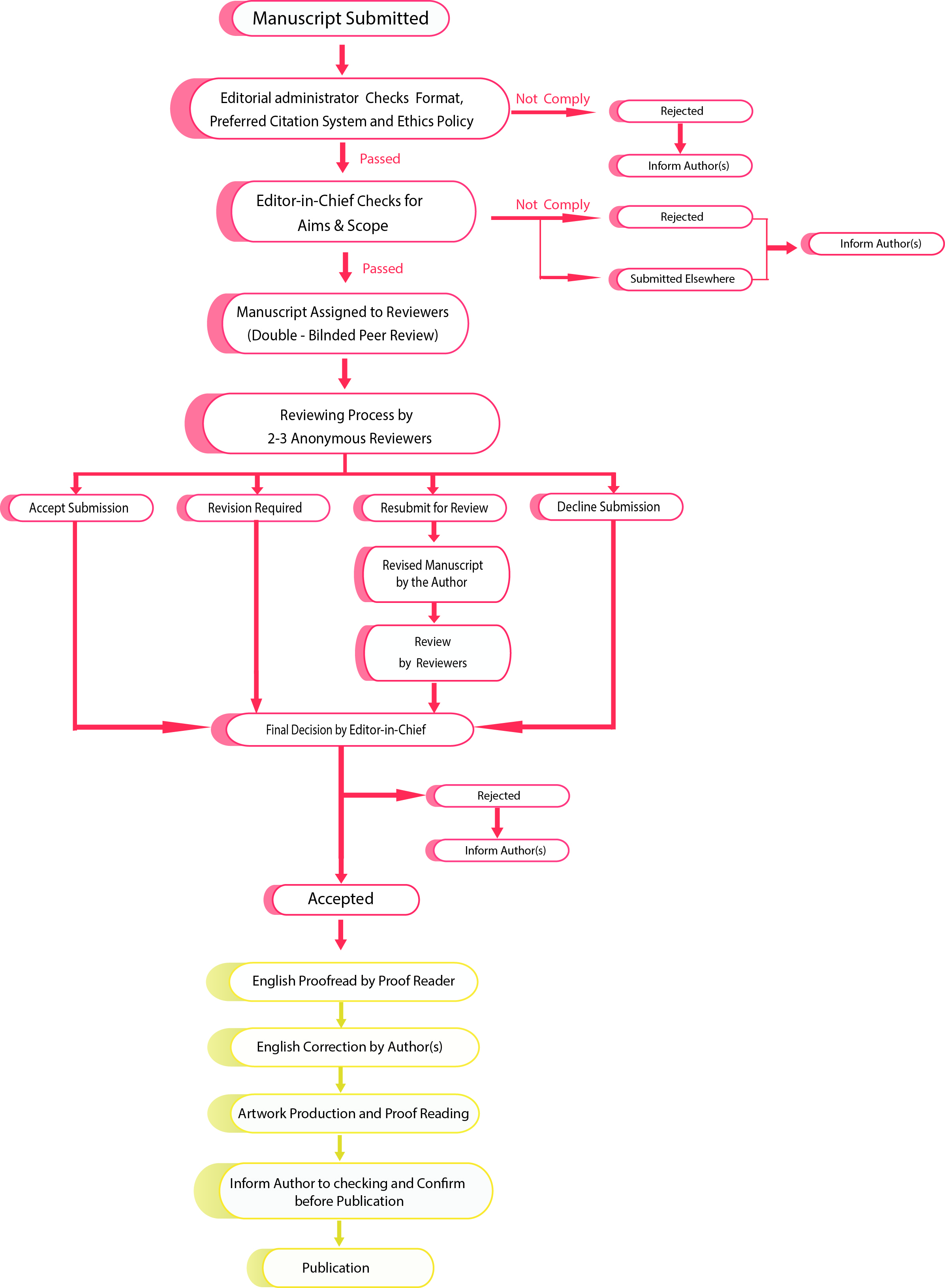JOURNAL TEMPLATE
SIDE MENU
INFORMATION FOR AUTHOR
POLICY
INFORMATION
Peer Review Policy and Process
DOUBLE-BLIND PEER REVIEW POLICY
Sriwijaya Journal of Community Empowerment follows a double-blind peer review policy, ensuring the anonymity of both referees and authors throughout the process. Authors are required to remove all identifying details from the main document to maintain confidentiality, though they may cite their own work as long as their identity is not disclosed.
Examples:
Initially, the Editor-in-Chief assesses all submissions for their relevance and suitability for the journal. Suitable papers are then forwarded to a minimum of two independent expert reviewers for an evaluation of scientific quality.
The Editor-in-Chief has the final say on article acceptance or rejection, and this decision is conclusive.
DOUBLE-BLIND PEER REVIEW PROCESS
Submission to Editorial Head Office
The Sriwijaya Journal of Community Empowerment Editorial Board maintains a selective review process, accepting articles based on scholarly merit, research significance, research integrity, and adherence to journal style guidelines (APA format).
The Editorial Board is committed to unbiased review, evaluating authors solely on research expertise and contribution without regard to race, ethnicity, nationality, citizenship, financial resources, or other limiting factors. Each submission undergoes a rigorous two-stage assessment.
The peer review process in Sriwijaya Journal of Community Empowerment follows eight essential steps, as outlined below:
Submission of Paper
Authors, both from Indonesia and internationally, submit their paper via the online system.
Editorial Office Assessment
The journal’s team checks the document for proper formatting and organization per the Author Guidelines but does not assess its content quality at this stage.
Appraisal by the Editor-in-Chief
The Editor-in-Chief evaluates the paper's relevance and originality. If it does not meet the journal’s standards, it may be declined without further review.
Invitation to Reviewers
The Editor-in-Chief or Editorial Board sends review invitations to selected experts. Additional invitations may be issued until two reviewers accept the assignment.
Review is Conducted
Reviewers conduct a thorough reading, noting their observations and evaluating the paper’s merits and weaknesses. Based on their assessment, they recommend acceptance, rejection, or revision (either major or minor).
Journal Evaluates the Reviews
The Editor-in-Chief or Editorial Board reviews all feedback. If reviews significantly differ, an additional reviewer may be consulted.
The Decision is Communicated
The Editor-in-Chief communicates the decision to the author, accompanied by any pertinent anonymous comments from reviewers.
Last Steps
Upon acceptance, the paper moves to production. If revisions are requested, the Editor-in-Chief may provide constructive feedback from reviewers. For major revisions, reviewers may re-evaluate the revised paper, while minor changes might be reviewed solely by the Editor-in-Chief.
Sriwijaya Journal of Community Empowerment Editorial Process

JOURNAL TEMPLATE
SIDE MENU
INFORMATION FOR AUTHOR
POLICY
INFORMATION
USER
Listed & Indexed by :
Publisher:
Department of International Relations, Faculty of Social and Political Sciences
Universitas Sriwijaya
Jalan Palembang-Prabumulih, KM 32 Inderalaya,Kabupaten Ogan Ilir, Sumatera Selatan 30662
Licensed

All articles published in Sriwijaya Journal of Community Empowerment © 2025 by Sriwijaya Journal of Community Empowerment is licensed under CC BY-NC 4.0
